QuestionQUESTION: we have been watching this problem with our guinea pig for approx 3 weeks...thinking it might be an abscess that would drain on it's own. orignally, this lump appeared to be at midline and grew rapidly over a week. i examined it a little closer tonight and she actually has 2 lumps, split at midline. the R is approx 1cm diameter the L 3cm+. they appear non-tender. very firm, mobile, no warmth or erythema. no drainage. no noted change in weight. normal activity/behavior. eating and drinking normally. please advise. thank you.
ANSWER: If this is underneath her chin it sounds like a subglottal cyst, which is as an abscess. It's filled with pus caused by bacteria. They're usually caused by the pig scratching itself and barely breaking the skin. The toenails are just naturally dirty and a staph infection is born. The pus inside is extremely smelly and has a typical odor of staph.
I can help walk you through the process of opening and draining the abscess, but if you are not comfortable with that I recommend you take her to a vet for an I & D (incision and drainage). They will continue to grow until they pop on their own. The problem is they will heal over before all the pus is drained out and the abscess starts all over again.
If you feel confident enough that you could do this I will be happy to instruct you. But let me know first if that's the case. This is not something that most people are comfortable with.
---------- FOLLOW-UP ----------
QUESTION: Thank you. I am comfortable doing I & D's. I'm a PA in the ER and do them frequently. I've never done anything on animals, so my main concern is that Fergie doesn't bite me. The lump is under the chin, but not at midline. There is one on each side. Would it be usual to get an abscess on both sides at the same time? Please walk me through doing the I&D. I would greatly appreciate it. Thanks so much! Paige
AnswerI'm delighted that you're not only willing, but well experienced with I & D's. This will be a walk in the park for you. Of course you'll want to be sure this is an abscess and not just part of what we call a waddle, hanging skin that is just fat. If you feel an actual lump that's different. And yes they can get them on both sides. The abscess is not just palpable but spongey to the touch.
You'll need a #11 scalpel, some Betadine Solution, a 10cc syringe and a couple of 21 ga butterfly needles. You're just going to use the hub and the rubber tip of the butterfly tubing, cut to about 1/2 in.
The easiest way to handle her is to wrap her body in a small towel or washcloth. That keeps her front legs from getting in the way and also stabilizes the head. Wrap the towel right up to her ears and criss cross it over the front legs. Keep her back feet and hind end on a firm surface and she won't move around as she'll feel secure being able to 'touch bottom'.
I have a deep sink in my garage right next to my washer and it makes a perfect surface. I can lean the pig over the sink to catch the drainage. And sometimes it comes out with a great deal of force as you know. So you want her heading in the right direction-away from you. Her head is not mobile enough that you will get bit. As many of these as I have done I've never been bitten.
The procedure is the same as doing a human patient. Wash the area thoroughly with Betadine Solution or Hibiclens. I prefer Betadine and I dilute it with a bit of warm water. Using a #11 scalpel hold her body slightly in a standing position. You can have her back pressed against you for more stability. And of course you know because it's most likely staph be sure to wear gloves. When you palpate the lump feel for the soft middle, like an ordinary abscess.
Using the tip of the scalpel put some pressure right on the soft center. You'll feel it go through the tough skin. It takes more pressure than you would expect because their skin is tough and is more toughened by the pocket of the abscess.
Make a small incision, enough that it won't close up too soon. Be ready, when you go through the tissue the pus will be foul smelling and anything from yellow cream to greenish in color. They don't often get sebaceous cysts on the neck but you will know what you're dealing with as soon as it opens. Sebaceous material is the same in pigs as humans, thick and sour smelling.
Then using your fingers express as much of the pus as you can. There will be a little blood when you empty the pocket, but not as much as you might expect. I use a 10 cc syringe will some Betadine Solution and water (mixed about 3 parts water to 1 part Betadine.
Draw up the Betadine water with the syringe, attach tip of the Butterfly on it, insert it into the opening and flush it, flush it, flush it. It's that old med school rule: the solution to pollution is dilution! Sometimes when you're filling the pocket with the solution it will fill like a balloon. Just use the fingers again to empty it before you put more in.
I've tried packing them with some idodiform gauze, but the pocket isn't usually deep enough to insert it and the little patient just won't hold still for it. They manage to get it out in no time. So I seldom do that anymore.
You'll need to wash the neck daily and keep expressing the pus and irrigate it with the Betadine Solution/Water. Usually about four days of this and there's no more pus. Keep checking the wound and remove any scab that forms. As with your human patients you want it to close from the inside out.
This will be easy for you. And you will have saved at least $200 at the vet. They seldom need antibiotics but if you feel better giving her something use Bactrim. The dose is very small and you'll only give about 1/2 cc daily for five days. Cavies cannot tolerate any penicillins as it destroys the normal flora and they succumb to a secondary infection. If you elect to give antibiotics you should also give them probiotics to protect the GI system. Typically they do fine without the antibiotics once the abscess is draining and cleaned.
The best thing about doing this is you won't have to hear your patient complain about the waiting time and how much their co-pay is!
Please keep me posted.

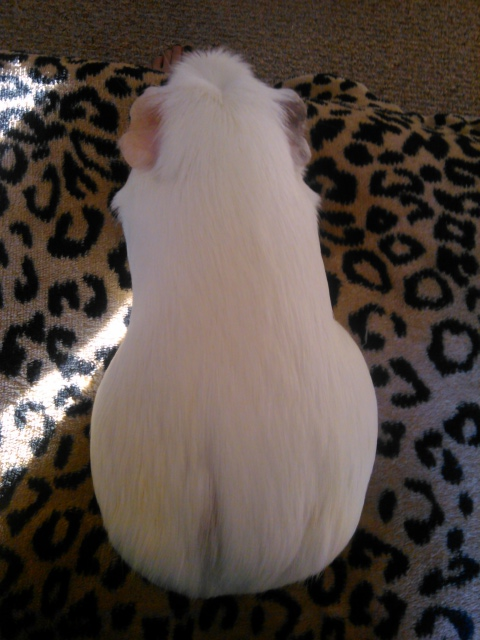 pregnant guinea pig??
Question
Baylene
Hi! I have a guinea pig that i
pregnant guinea pig??
Question
Baylene
Hi! I have a guinea pig that i
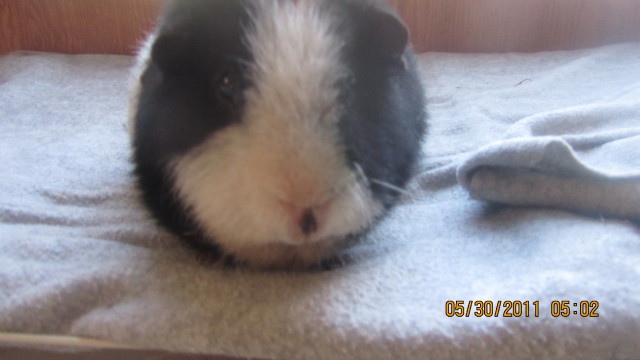 growth on my guinea pigs snout
QuestionQUESTION: Recently I noticed a growth on my 2 y
growth on my guinea pigs snout
QuestionQUESTION: Recently I noticed a growth on my 2 y
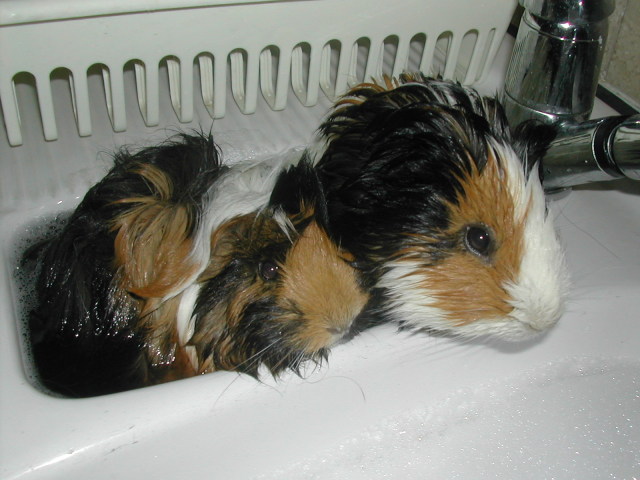 Sasha - guinea pig
Question
Sasha and Scamp
Hi my guinea pig Sasha is just
Sasha - guinea pig
Question
Sasha and Scamp
Hi my guinea pig Sasha is just
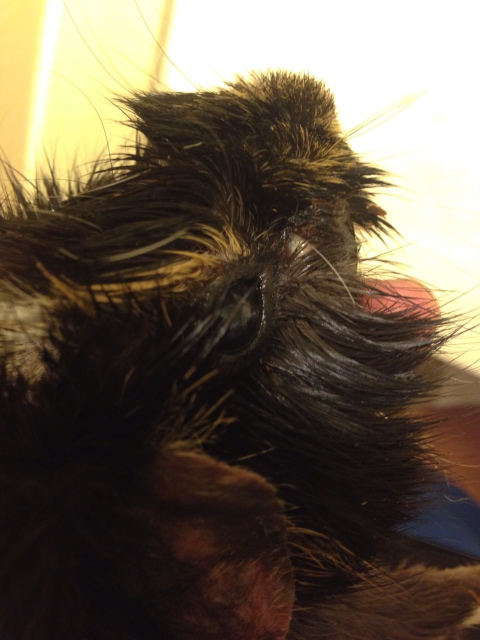 Guinea Pig, Benny, puss filled sore
Question
First started leaking Hole after puss dr
Guinea Pig, Benny, puss filled sore
Question
First started leaking Hole after puss dr
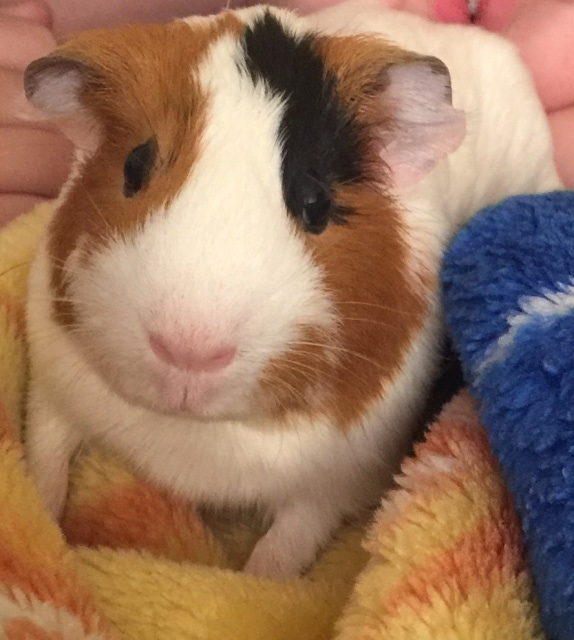 Guinea Pigs Age and Shedding and Bitting
Question
Molly Rosie
Hello I have 2 Sows p
Guinea Pigs Age and Shedding and Bitting
Question
Molly Rosie
Hello I have 2 Sows p